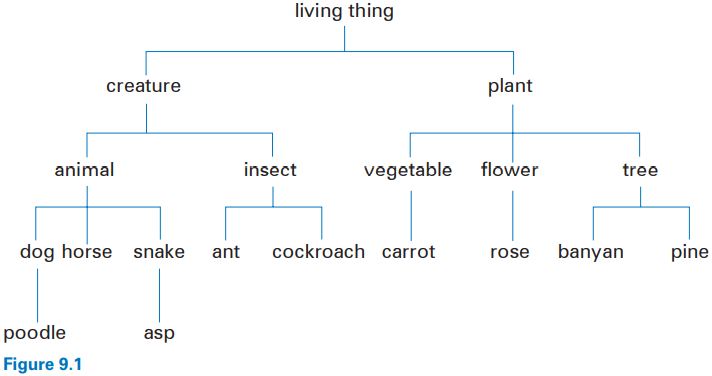


 Grammar
Grammar
 Tenses
Tenses
 Present
Present
 Past
Past
 Future
Future
 Parts Of Speech
Parts Of Speech
 Nouns
Nouns
 Verbs
Verbs
 Adverbs
Adverbs
 Adjectives
Adjectives
 Pronouns
Pronouns
 Pre Position
Pre Position
 Preposition by function
Preposition by function 
 Preposition by construction
Preposition by construction
 Conjunctions
Conjunctions
 Interjections
Interjections
 Grammar Rules
Grammar Rules
 Linguistics
Linguistics
 Semantics
Semantics
 Pragmatics
Pragmatics
 Reading Comprehension
Reading Comprehension|
Read More
Date: 2023-08-14
Date: 2024-07-17
Date: 2023-11-16
|
Hyponymy
When the meaning of one form is included in the meaning of another, the relationship is described as hyponymy. Examples are the pairs: animal/dog, dog/poodle, vegetable/ carrot, flower/rose, tree/banyan. The concept of “inclusion” involved in this relationship is the idea that if an object is a rose, then it is necessarily a flower, so the meaning of flower is included in the meaning of rose. Or, rose is a hyponym of flower.
When we consider hyponymous connections, we are essentially looking at the meaning of words in some type of hierarchical relationship. We can represent the relationships between a set of words such as animal, ant, asp, banyan, carrot,

cockroach, creature, dog, flower, horse, insect, living thing, pine, plant, poodle, rose, snake, tree and vegetable as a hierarchical diagram.
Looking at the diagram, we can say that “horse is a hyponym of animal” or “cockroach is a hyponym of insect.” In these two examples, animal and insect are called the superordinate (= higher-level) terms. We can also say that two or more words that share the same superordinate term are co-hyponyms. So, dog and horse are co-hyponyms and the superordinate term is animal.
The relation of hyponymy captures the concept of “is a kind of,” as when we give the meaning of a word by saying, “an asp is a kind of snake.” Sometimes the only thing we know about the meaning of a word is that it is a hyponym of another term. That is, we may know nothing more about the meaning of the word asp other than that it is a kind of snake or that banyan is a kind of tree.
It is worth emphasizing that it is not only words for “things” that are hyponyms. Words such as punch, shoot and stab, describing “actions,” can all be treated as cohyponyms of the superordinate term injure.
|
|
|
|
التوتر والسرطان.. علماء يحذرون من "صلة خطيرة"
|
|
|
|
|
|
|
مرآة السيارة: مدى دقة عكسها للصورة الصحيحة
|
|
|
|
|
|
|
نحو شراكة وطنية متكاملة.. الأمين العام للعتبة الحسينية يبحث مع وكيل وزارة الخارجية آفاق التعاون المؤسسي
|
|
|